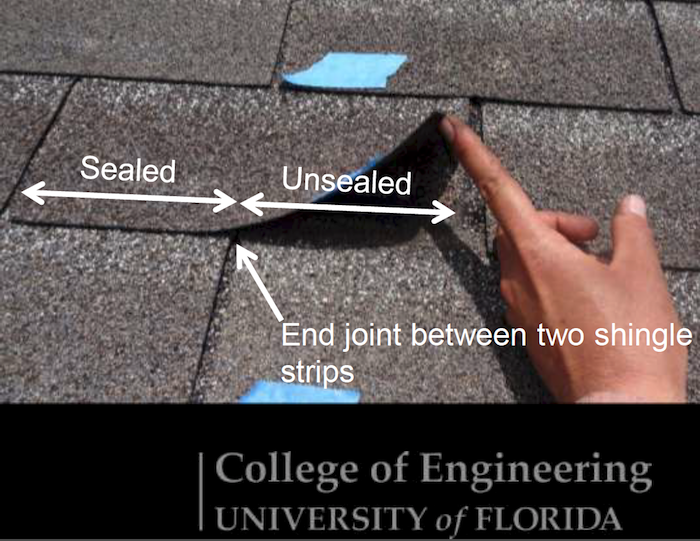By Kenton Shepard
Bond Failure
The bond of asphalt shingles always fails first where shingles bridge the joints between shingles in the underlying course. This is always true and is not affected by shingle type, age, or installation method.


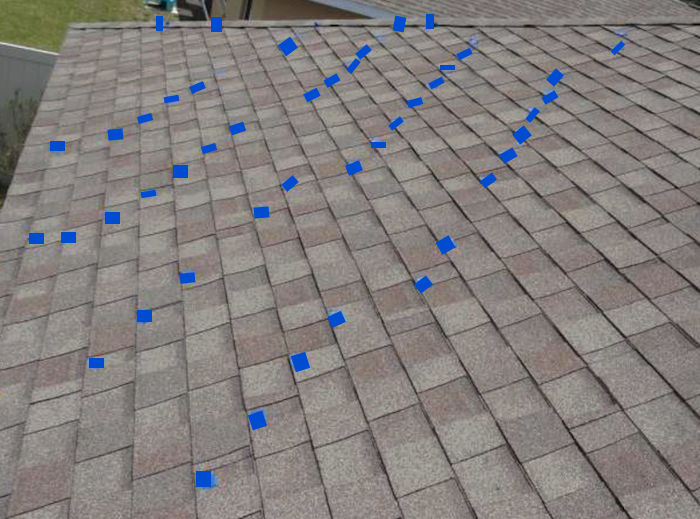
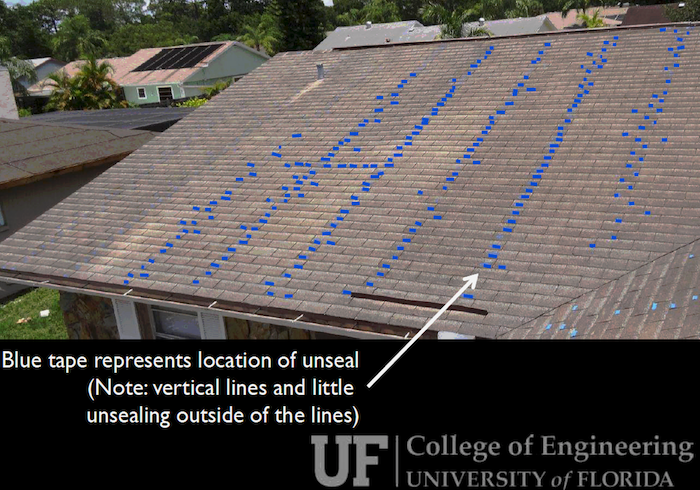
Bond failure pattern on a standard diagonal installation (left) and a racked installation (right).
From a study by the University of Florida
Shingle Bond Failure article- UF
Checking Shingle Bonding
In checking shingle bonding, find a joint near the corner of the roof, tug lightly on the butt of the shingle directly above the joint, and then move across the roof, checking shingles at joints, which will occur about every 3'. You won't check every joint, but check a representative number of joints across each slope. Remember that bond failure is connected to thermal cycling (temperature variations between day and night). Extreme levels of thermal cycling promote bond failure. This means that changes in bonding quality on a particular slope are more likely to appear between lower and upper parts of the slope than with shingles on different parts of the same level.
About Shingle Bonding
The sealant strips of asphalt composition shingles are the single most important component in the wind resistance of asphalt shingle roofs. Activated by the heat of the sun after installation, the asphalt sealant strips soften and bond to the shingles in the course above. This bond will increase with time until the sealant cures to its full design strength.
Sealant strips can fail to bond for several reasons:
- Poor quality shingles can have inadequate sealant strip materials (for which there are no manufacturing standards).
- High winds blowing at the time of installation can contaminate the sealant strips with dust and dirt.
- Since sealant strips are activated by heat, shingles installed during the winter may take months to bond fully. During this extended period, the adhesive strips may become contaminated by wind-blown dust and dirt.
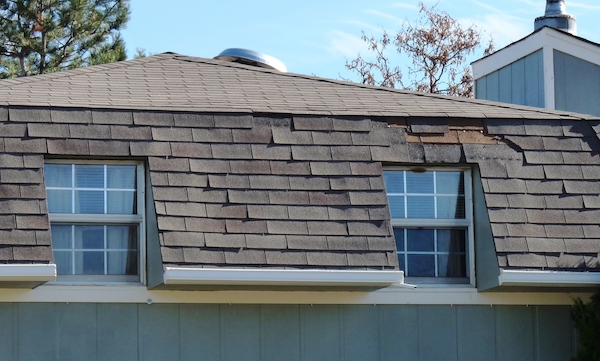
On steep roofs, gravity may not press shingles against each other hard enough for shingles to fully bond.
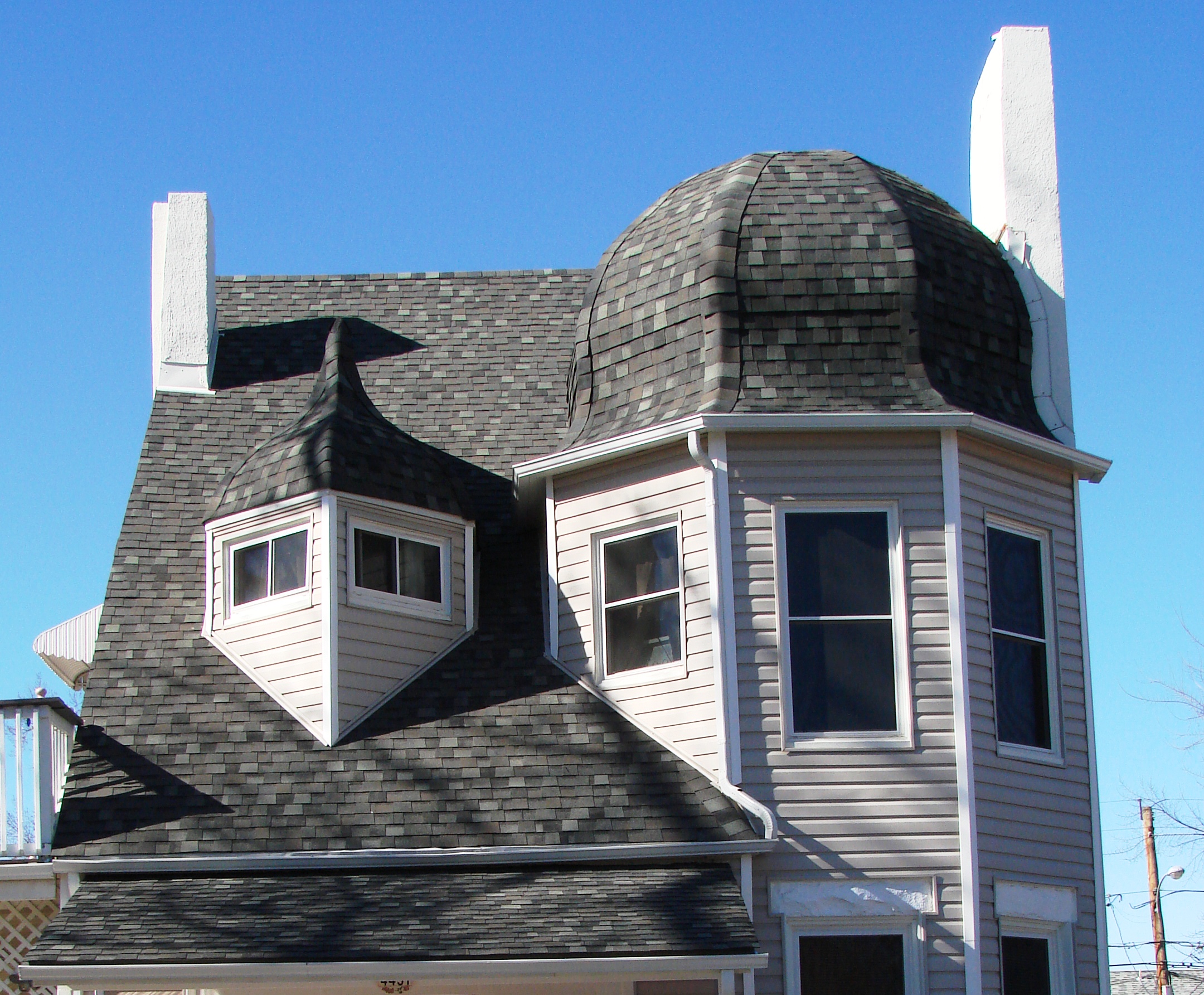
Finding shingles that had failed to bond on this roof wouldn't be a surprise!
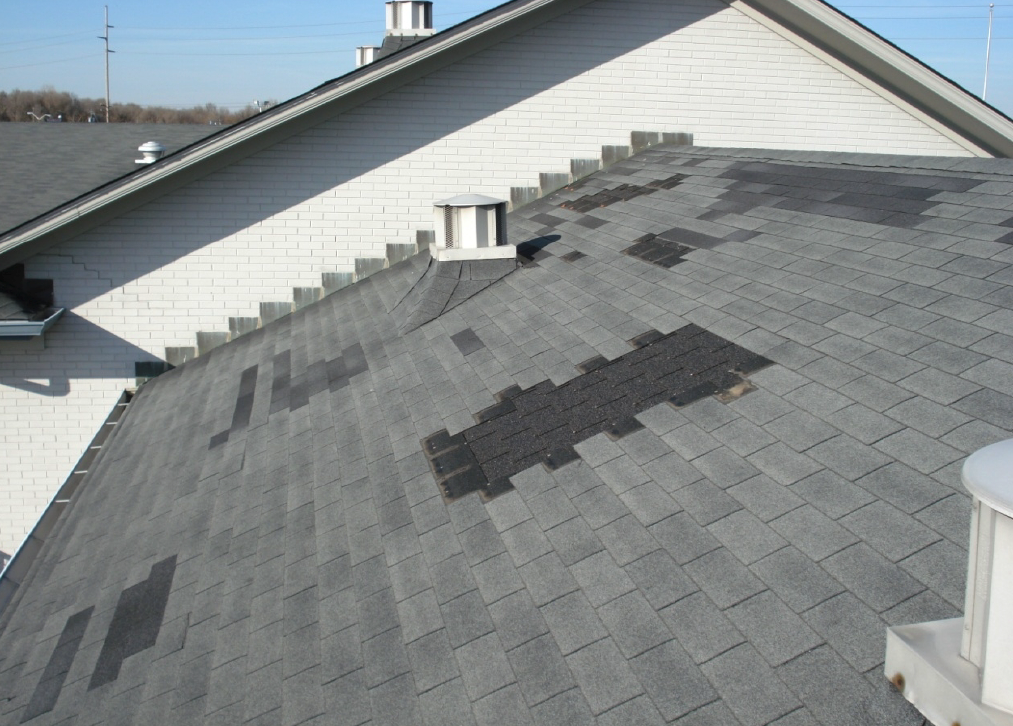
Wind damage. Shingles that come loose in patches are shingles that were fully bonded.
This tells you something about the bonding even before you mount the roof.
Factors that Affect Bonding
- Roof slopes that experience more thermal cycling will experience bond failure sooner than those that experience less thermal cycling.
- Sometimes shingles will be replaced on more deteriorated slopes only, so you may see homes with shingles of different ages. Older shingles are more likely to have failed bonds.
Learn more about shingle bonding from InterNACHI's Mastering Roof Inspection series at:
http://www.nachi.org/asphalt-comp-shingles-part51-105.htm


